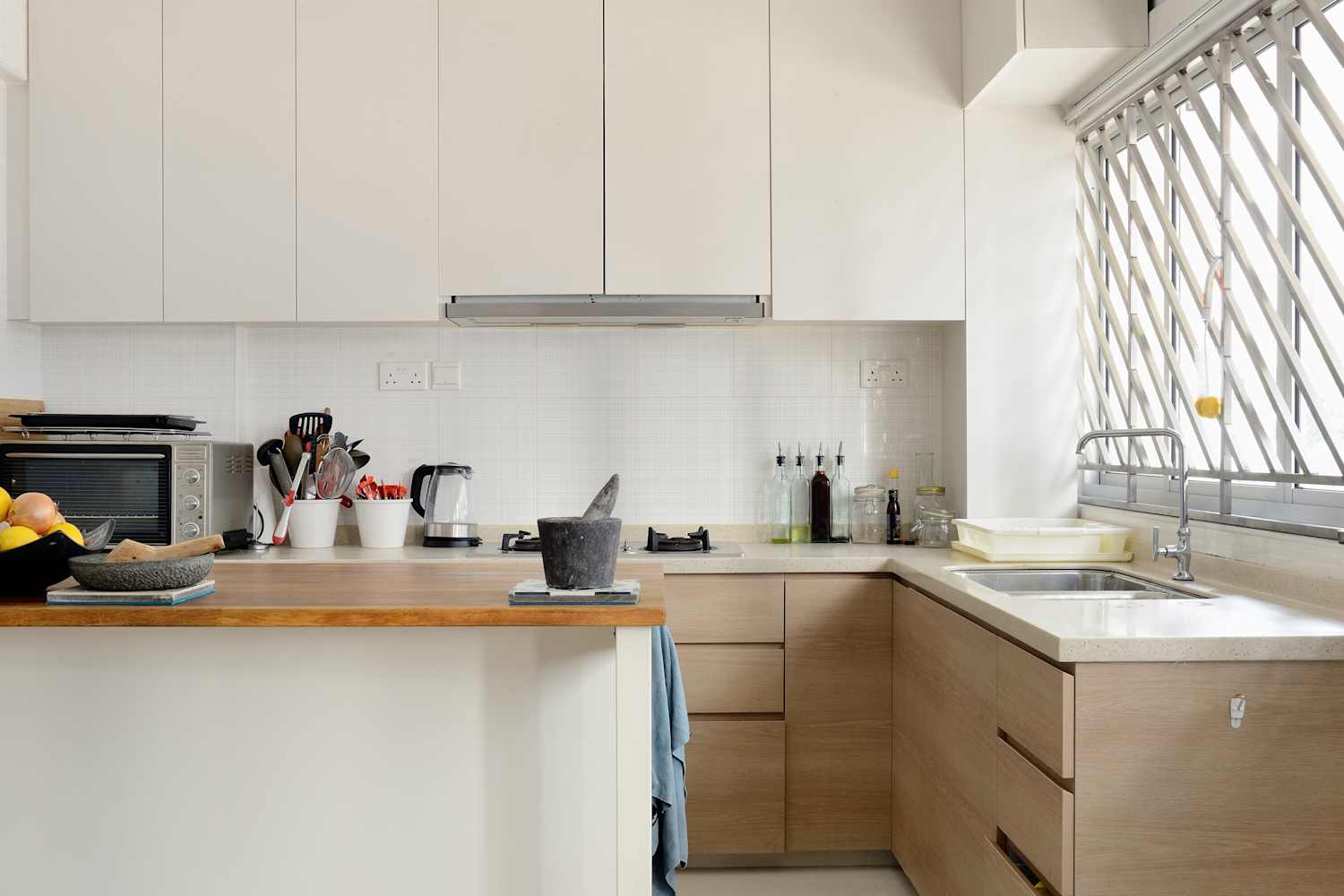
"I only really thought about that awkward space after seeing an Instagram Reel shared by Sharie Shepherd-Bouge (@CleaningFairySharie33). The creator showed how she had to use gloves, a spatula-like tool, and likely a face mask to purge several years' worth of grime from the top of some shorter kitchen cabinets. I was instantly grossed out. That foot-tall gap at the top of my white cabinets, I realized, probably also has a thick, hard-to-reach shelf of dust that has been secretly accumulating on top. I'm far from alone in this dilemma: These kitchen cabinets that don't reach the top of the ceiling, otherwise known as an English-inspired kitchen cabinet, are common everywhere and have gone in and out of style over the years."
"Of course, not all homes with high ceilings have these English-style cabinets, but it's more likely when taller cabinetry designs might make the kitchen look a little top-heavy. Experts and home design amateurs are split on the once-'dated' choice, with interior design buff Shea McGee of Studio McGee arguing that it adds light, visual interest, and more balance to certain kitchens."
Kitchens with cabinets that do not reach the ceiling leave a horizontal gap that easily accumulates dust and grime in hard-to-reach areas. A viral cleaning clip showed extensive, unpleasant work required to remove years of buildup from the tops of short cabinets. English-inspired cabinets remain common and have cycled in and out of fashion depending on overall kitchen proportions. Some designers argue that a gap can add light, visual interest, and balance in the right space. Other people point out that the dead space becomes a high-maintenance cleaning problem and may influence future apartment or home searches.
Read at Apartment Therapy
Unable to calculate read time
Collection
[
|
...
]